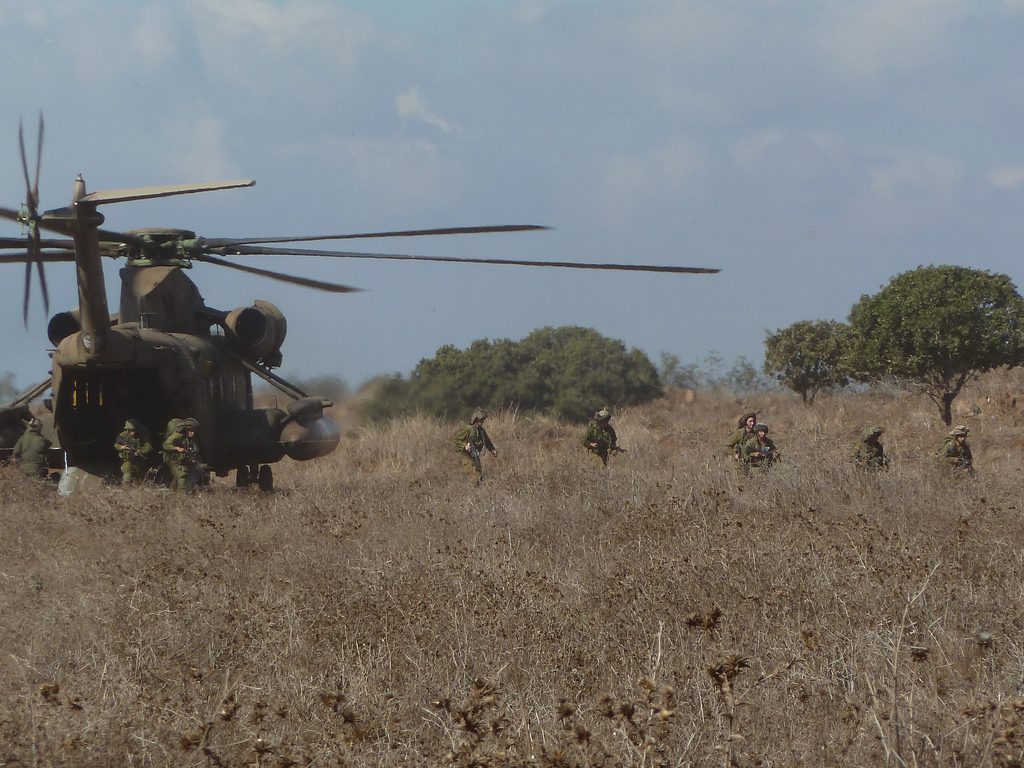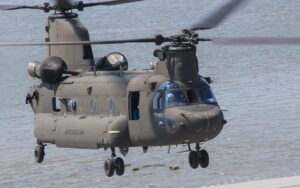
An Israeli CH-53 deploys commandos during an earlier training exercise in 2011.
TEL AVIV: The Israeli Air Force (IAF) is putting heavy pressure on the Israeli General Staff to reach a fast decision on the replacement of its CH-53’s. The decision, now expected in a few weeks, will be brought for a final approval to the newly formed Israeli Cabinet.
To illustrate the urgency, IDF Chief of Staff Lt. General Aviv Kochavi flew last week in an old CH-53 (Yasur) in a scenario of long-range flights that moved a team of special commandos deep into “enemy” territory to demonstrate the rescue of a downed pilot.
During the flight, the commander of the IAF, Maj. General Amikam Norkin, detailed the urgent need for a replacement in face of the threats that the IDF faces across the Israeli borders and beyond.
The IAF has evaluated two contenders –the Lockheed Martin CH-53K and the Boeing CH-47.
IAF pilots and technician teams that have flown the two heavy helicopters in the U.S have prepared comprehensive reports of their capabilities, projected availability and life cycle costs.
Ground force commanders have made it clear that the need of a new heavy helicopter is “very urgent.”
The urgency became clearer earlier this year after one of the old CH-53’s caught fire in flight and performed an emergency crash landing in a field in southern Israel.

The Sikorsky CH-53K heavy lift helicopter performs a mid-air refueling for the first time, April 6, 2020.
The helicopter was one of three en route to a base in southern Israel for a training exercise and was flying at a height of 170 meters when the third aircraft notified the pilots of the fire in the engine. The pilots carried out the emergency landing within a minute of the fire breaking out.
All 11 soldiers from the elite Shaldag commando unit and two pilots made it out unhurt. Following the accident, the IAF grounded all its CH-53’s for three weeks and launched an investigation.
The investigation found that the initial fire was caused by a disintegration of a power relay in the left engine. “Despite the fact that this malfunction had been identified by the manufacturer , the information was never passed along to the air force. The investigation team also found that the air force’s maintenance procedures did not find the malfunction in the relay,” the IAF said.
Lockheed Martin, which owns Sikorsky, said it was looking into the matter. “Sikorsky continues to work with the Israeli Air Force investigation authorities in respect to this incident. We will share any verified actionable information with the operating fleet. At this time we have no further comment,” the company said.
The accident emphasizes, sources here say, the need to make a fast selection of the replacement of the CH-53D’s that have been upgraded again and again.
The process of selecting a new helicopter has been slow in spite of the fact that there’s a shortage of spares for the CH-53D’s .This shortage forced the IAF to ask for a shipment of grounded helicopters kept in the U.S Marines junk yard so they could be cannibalized.

The latest variant of the Boeing Chinook, the CH-47F Block II, in test flight.
Boeing is offering the Chinook F Block 2 which is in some ways similar to the G operated by the U.S Special Forces.
This version will have an aerial refueling probe and larger fuel tanks. Israeli military sources say the version offered will be a hybrid between Chinook F and Chinook G but will boast larger fuel tanks, similar to the model currently flying in Canada.
The Chinook cockpit is expected to be fully computerized and will feature unique systems of the G-type.
The Chinook F Block 2 is in the process of receiving a number of enhancements to its digital cockpit called the Common Avionics Architecture System, or CAAS. It will also get new rotor blades engineered with composites and other materials designed to give the helicopter an additional 1,500 pounds of lift capability.
Clearing smoke: Boeing swapping out AH-64E Apache generators, eyes new generator options
“We’ve seen some improvement … and so readiness is there: We have enough retrofit generators right now [and] it’s not impacting readiness,” said John Chicoli, the director of Boeing’s global services for vertical lift and special operations.


























